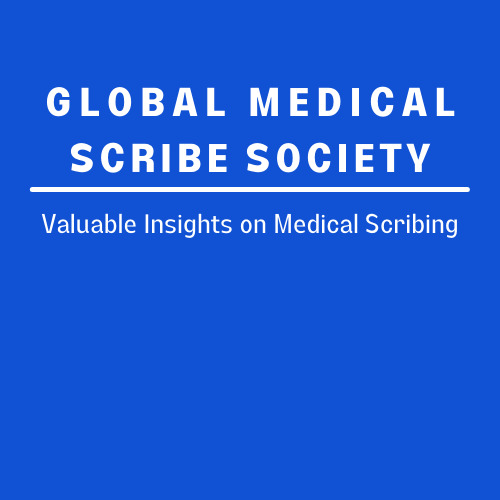
Physician burnout has emerged as the most concerning issue within the United States’ medical landscape. The healthcare sector’s relentless pace, long working hours, demanding schedules, Electronic Health Record (EHR) documentation requirements, and constant time pressure have contributed to a widespread prevalence of burnout among physicians. This alarming trend poses significant risks not only to the well-being of healthcare professionals but also to patients and healthcare organizations as a whole. To assess the extent of this issue, a nationwide survey was conducted, revealing that over fifty percent of physicians reported experiencing at least one symptom of burnout. Consequently, this has had adverse effects on patient satisfaction and overall patient outcomes. The gravity of this situation calls for urgent attention and proactive measures to address physician burnout for the betterment of the healthcare system as a whole.
What is physician burnout?
Physician burnout can be best described as a state where physicians experience exhaustion, emotional detachment, and a sense of inefficiency at work. It’s important to note that burnout is different from ordinary workplace stress. While stress can be managed with time off between shifts, burnout leaves physicians feeling completely drained and unable to perform at their best.
Startling statistics highlight the severity of physician burnout in the USA:
– A 2021 Mayo Clinic research found that 42% of physicians suffer from burnout.
– LeverageRX reported that 50% of physicians work at least 60 hours per week, with charting and paperwork occupying a significant portion of their time.
– An alarming finding by Psychiatry Advisor revealed that 42% of physicians hesitate to seek professional help to cope with their struggles.
– The Annals of Medicine study estimated that physician burnout costs up to $6 billion annually due to recruitment and replacement of physicians who leave their jobs due to burnout.
– Stanford University School of Medicine highlighted that physician burnout contributes to preventable medical errors and unsafe healthcare environments.
Medscape studies further expose the gravity of the issue:
– 43% of physicians cope with burnout by isolating themselves.
– 26% of physicians turn to alcohol to manage burnout symptoms.
– Female physicians experience higher burnout rates than males.
– The COVID-19 pandemic contributed to burnout symptoms in 21% of physicians.
– Long working hours are a significant factor for burnout in 37% of physicians.
– The pandemic’s impact on pay and extended hours caused burnout in 72% of physicians.
– Shockingly, 13% of physicians have reported having suicidal thoughts due to burnout.
Addressing physician burnout requires proactive steps:
– Utilizing scribe-on-site or virtual scribe services can reduce administrative workload and enhance physician-patient interactions.
– Maintaining a healthy work-life balance is crucial, with scheduling personal time for rejuvenation and self-care.
– Recognizing emotions and taking time off for restorative activities can help prevent burnout.
– Identifying and letting go of factors beyond one’s control can alleviate stress.
– Recognizing warning signs and seeking help early on can prevent more severe consequences like depression and substance abuse.
Physician burnout is a serious issue that demands immediate attention and action. By implementing strategies to mitigate burnout, healthcare organizations can ensure the well-being of their physicians, improve patient care, and enhance the overall healthcare system.
Could Medical Scribes be the Solution to Physician Burnout?
One of the primary drivers of physician burnout is the excessive time spent on repetitive administrative tasks while working with electronic medical records (EMRs). To alleviate this burden and assist physicians in managing their intense workloads, healthcare organizations have turned to medical scribes. These scribes can either work physically alongside physicians, documenting clinical encounters in real-time, or remotely, listen to the patient encounters through a secure internet connection and complete documentation, real-time. In both cases, the scribes enter data directly into the EMR. Several studies have highlighted the benefits of using medical scribes, which include:
1. Increased Physician Productivity and Efficiency: By offloading documentation tasks to scribes, physicians can focus more on patient care and medical decision-making, leading to improved efficiency.
2. Enhanced Physician Satisfaction: With reduced administrative burdens, physicians experience higher job satisfaction, as they can dedicate more time to meaningful interactions with patients.
3. Improved Patient Satisfaction and Clinical Outcomes: Scribes aid in capturing comprehensive and accurate medical notes, resulting in better patient satisfaction and potentially improved clinical outcomes.
4. More Accurate and Complete Documentation: Scribes ensure that all relevant information is recorded promptly and accurately, minimizing the chances of errors and omissions.
5. Increased Practice Revenue: Despite the initial investment, medical scribes can positively impact practice revenue, particularly in high-stress settings like the Emergency Department (ED). Studies have indicated that scribes can improve physician productivity enough to offset their costs, resulting in a considerable return on investment.
Addressing physician burnout is crucial because physicians play a vital role in saving and improving lives. Their commitment to perfectionism, demanding schedules, and work-life imbalances can take a toll on their well-being, leading to burnout. In the US, physician burnout rates have reached alarming levels, affecting nearly half of all physicians. While individual stress-coping strategies are essential, healthcare organizations must also take proactive measures to prevent burnout and protect their healthcare providers. Without the well-being of physicians, the entire healthcare system could face significant challenges.
In conclusion, medical scribes have emerged as a potential remedy for physician burnout by alleviating administrative burdens and allowing physicians to focus on patient care. By implementing burnout-prevention measures and supporting their healthcare providers, organizations can ensure the continued success and effectiveness of the healthcare system.
